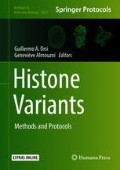Abstract
The epigenome has been mapped in different cell types to understand the relationship between the chromatin landscape and the control of gene expression. Most mapping studies profile a large population of cells in various stages of the cell cycle, which results in an average snapshot of the chromatin landscape. However, chromatin is highly dynamic, undergoing rapid changes during active processes such as replication, transcription, repair, and remodeling. Hence, we need methods to map chromatin as a function of time. To address this problem in the context of replication, we developed the method MINCE-seq (Mapping In vivo Nascent Chromatin with EdU and sequencing). MINCE-seq is a genome-wide method that uses the passage of replication fork as a starting point to map the chromatin landscape as a function of time. MINCE-seq can measure chromatin dynamics in a time scale of minutes and at the resolution of individual nucleosome positions and transcription factor-binding sites genome-wide.
Access this chapter
Tax calculation will be finalised at checkout
Purchases are for personal use only
References
Ho JW, Jung YL, Liu T et al (2014) Comparative analysis of metazoan chromatin organization. Nature 512:449–452
Krebs AR, Imanci D, Hoerner L et al (2017) Genome-wide single-molecule footprinting reveals high RNA polymerase II turnover at paused promoters. Mol Cell 67:411
Buenrostro JD, Wu B, Chang HY, Greenleaf WJ (2015) ATAC-seq: a method for assaying chromatin accessibility genome-wide. Curr Protoc Mol Biol 109:21.29.1–21.29.9
Wang H, Mayhew D, Chen X et al (2012) "calling cards" for DNA-binding proteins in mammalian cells. Genetics 190:941–949
Henikoff JG, Belsky JA, Krassovsky K et al (2011) Epigenome characterization at single base-pair resolution. Proc Natl Acad Sci U S A 108:18318–18323
Hesselberth JR, Chen X, Zhang Z et al (2009) Global mapping of protein-DNA interactions in vivo by digital genomic footprinting. Nat Methods 6:283–289
Ramachandran S, Henikoff S (2016) Transcriptional regulators compete with nucleosomes post-replication. Cell 165:580–592
Salic A, Mitchison TJ (2008) A chemical method for fast and sensitive detection of DNA synthesis in vivo. Proc Natl Acad Sci U S A 105:2415–2420
Blumenthal AB, Kriegstein HJ, Hogness DS (1974) The units of DNA replication in Drosophila melanogaster chromosomes. Cold Spring Harb Symp Quant Biol 38:205–223
Seale RL (1978) Nucleosomes associated with newly replicated DNA have an altered conformation. Proc Natl Acad Sci U S A 75:2717–2721
Rizzino A, Blumenthal AB (1978) Synchronization of Drosophila cells in culture. In Vitro 14:437–442
Author information
Authors and Affiliations
Corresponding author
Editor information
Editors and Affiliations
Rights and permissions
Copyright information
© 2018 Springer Science+Business Media, LLC, part of Springer Nature
About this protocol
Cite this protocol
Ramachandran, S., Henikoff, S. (2018). MINCE-Seq: Mapping In Vivo Nascent Chromatin with EdU and Sequencing. In: Orsi, G., Almouzni, G. (eds) Histone Variants. Methods in Molecular Biology, vol 1832. Humana Press, New York, NY. https://doi.org/10.1007/978-1-4939-8663-7_8
Download citation
DOI: https://doi.org/10.1007/978-1-4939-8663-7_8
Published:
Publisher Name: Humana Press, New York, NY
Print ISBN: 978-1-4939-8662-0
Online ISBN: 978-1-4939-8663-7
eBook Packages: Springer Protocols

